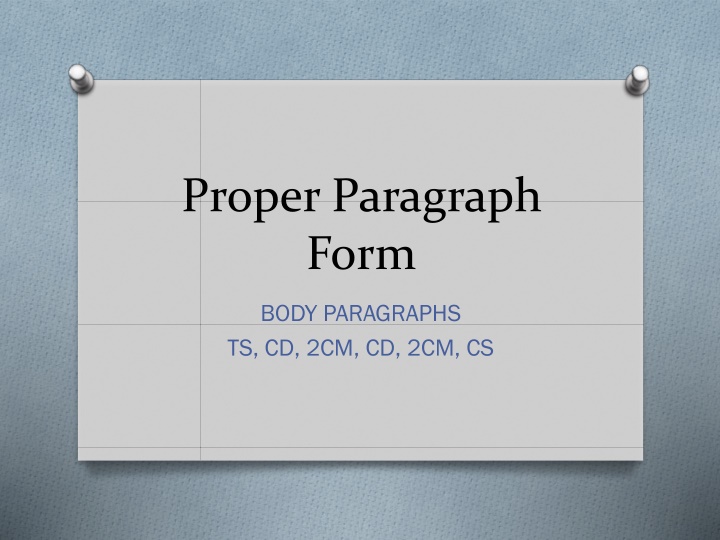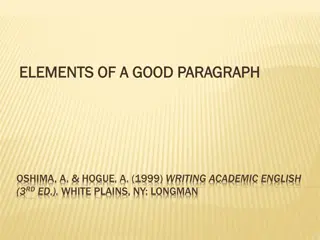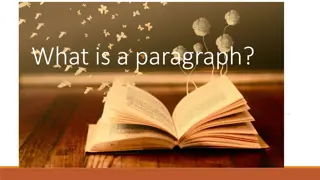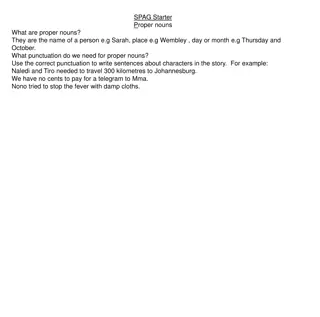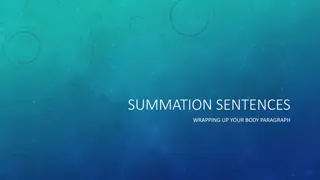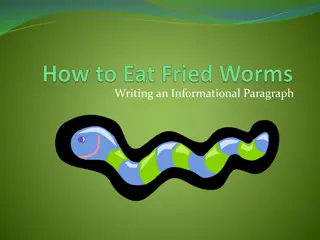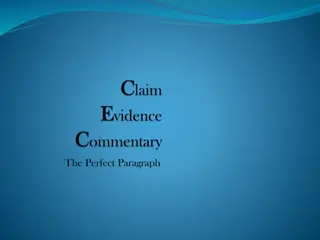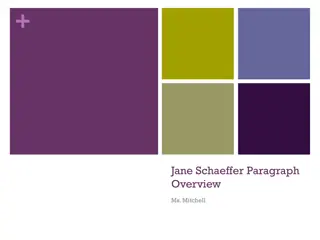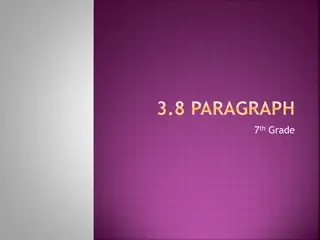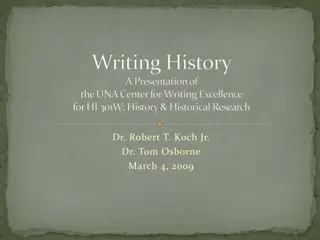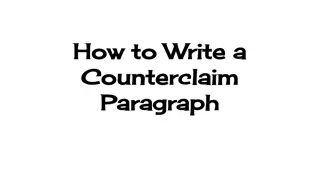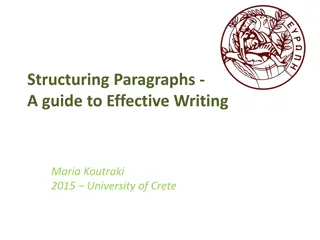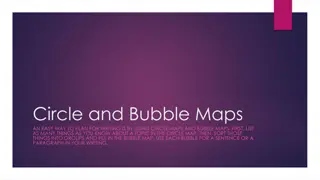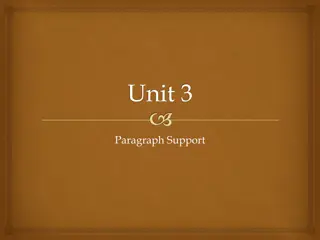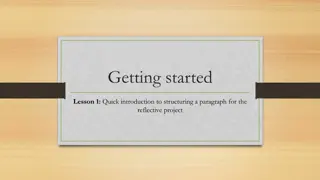Proper Paragraph Writing Guide
Learn how to structure a paragraph effectively with a topic sentence stating the main point, concrete details supporting it with examples or evidence, commentary providing analysis, and a concluding sentence that ties everything together. Examples are provided for better understanding.
Download Presentation

Please find below an Image/Link to download the presentation.
The content on the website is provided AS IS for your information and personal use only. It may not be sold, licensed, or shared on other websites without obtaining consent from the author.If you encounter any issues during the download, it is possible that the publisher has removed the file from their server.
You are allowed to download the files provided on this website for personal or commercial use, subject to the condition that they are used lawfully. All files are the property of their respective owners.
The content on the website is provided AS IS for your information and personal use only. It may not be sold, licensed, or shared on other websites without obtaining consent from the author.
E N D
Presentation Transcript
Proper Paragraph Form BODY PARAGRAPHS TS, CD, 2CM, CD, 2CM, CS
Topic Sentence (TS) O This sentence should state the main point of the paragraph and be straight to the point. O Example 1: Cinderella leads a miserable life. O Example 2: Global warming is a world problem and needs to be stopped.
Concrete Detail (CD) Details that prove your topic sentence. You can use facts, examples, illustrations, evidence, support, plot references, paraphrases, citations, quotations, plot summary, etc. O Example 1: For example, she does all the cooking, cleaning, and sewing. O Example 2: If it is not stopped, statistics show that the world will be drastically hurt. O Transitions: O For example, For instance, Indeed, In fact, Additionally, etc.
Commentary (CM) O Your analysis, interpretation, explanation, or insight; explain why your CD supports your TS. There are two commentary sentences to each concrete detail. No facts! O Example 1: O CM1: This shows that she feels taken advantage of by her selfish stepmother and stepsisters. O CM2: This is important because her horrible life gives her a present, her fairy godmother. O Example 2: O CM1: Global warming should be man's greatest worry. O CM2: This is because the Earth can become negatively and drastically affected world wide. O Transitions: O This (also) shows that, This is (important) because, In addition, Furthermore, Therefore, This is evidence of, This emphasizes, etc.
Concluding Sentence O The closing sentence that wraps up the TS and sums up the paragraph. It closes up the thoughts and gives insight to the next paragraph. Emotional or connotative words are preferred here usually beginning with "As a result" or another concluding sentence. O Example 1: As a result, she becomes a princess. O Example 2: Therefore, global warming is top priority and cannot be ignored. O Transitions: O As a result, Eventually, Finally, To conclude, overall, etc.
Example Paragraph Cinderella leads a miserable life. For example, she does all the cooking, cleaning, example, she does all the cooking, cleaning, and sewing. and sewing. This shows that she feels taken advantage of by her selfish stepmother and stepsisters. This is important because her horrible life gives her a present, her fairy godmother. As a result, she becomes a princess. For
Example Paragraph Global warming is a world problem and needs to be stopped. If it is not stopped, If it is not stopped, statistics show that the world will be statistics show that the world will be drastically hurt. drastically hurt. Global warming should be man's greatest worry. This is because the Earth can become negatively and drastically affected world wide. Therefore, global warming is top priority and can not be ignored.
Introducing Your Concrete Details and Commentary
Integrating Quotations O NEVER just drop a quotation into your paper. Always introduce it and explain it with your own writing. O There are three main ways to introduce quotations. These include: 1. Introduce the quotation with a complete sentence and a COLON. 2. Use an introductory or explanatory phrase, separated from the quotation with a COMMA. 3. Make the quotation part of your own sentence WITHOUT using any punctuation.
When using a comma O You should use a comma from the quotation when your introductory or explanatory phrase ends with a verb. The author ends with a verb. The author comma to separate your own words adds claims emphasizes illustrates admits writes denies states demonstrates suggests points out asserts notes argues insists
Punctuating Quotations O Use an ellipsis . . . to indicate material omitted from the quotation. O You do not need to put ellipsis in the beginning or end of a quotation; only in the middle O Use brackets [ ] to add words or modify the verb.
Citing Quotes In-Text Author s last name and page number(s) of quote must appear in the text for direct quotations (using actual wording) and indirect quotations (summary or paraphrase) Wiesel reveals his struggle when he claims, I was the accuser, God the accused (65). This quotation emphasizes or God the accused (Weisel 65). O Capitalize the first letter of a direct quote when the quoted material is a complete sentence. O Do not use a capital letter when the quoted material is a fragment or only a piece of the original material's complete sentence.
Introducing Commentary O In other words, X believes_______ O In making this comment, X argues that_______ O X is insisting that_____ O X s point is that________ O This emphasizes that ________ O This illustrates ___________
CN Summary Something that is becoming clear to me about Proper Paragraph Form
